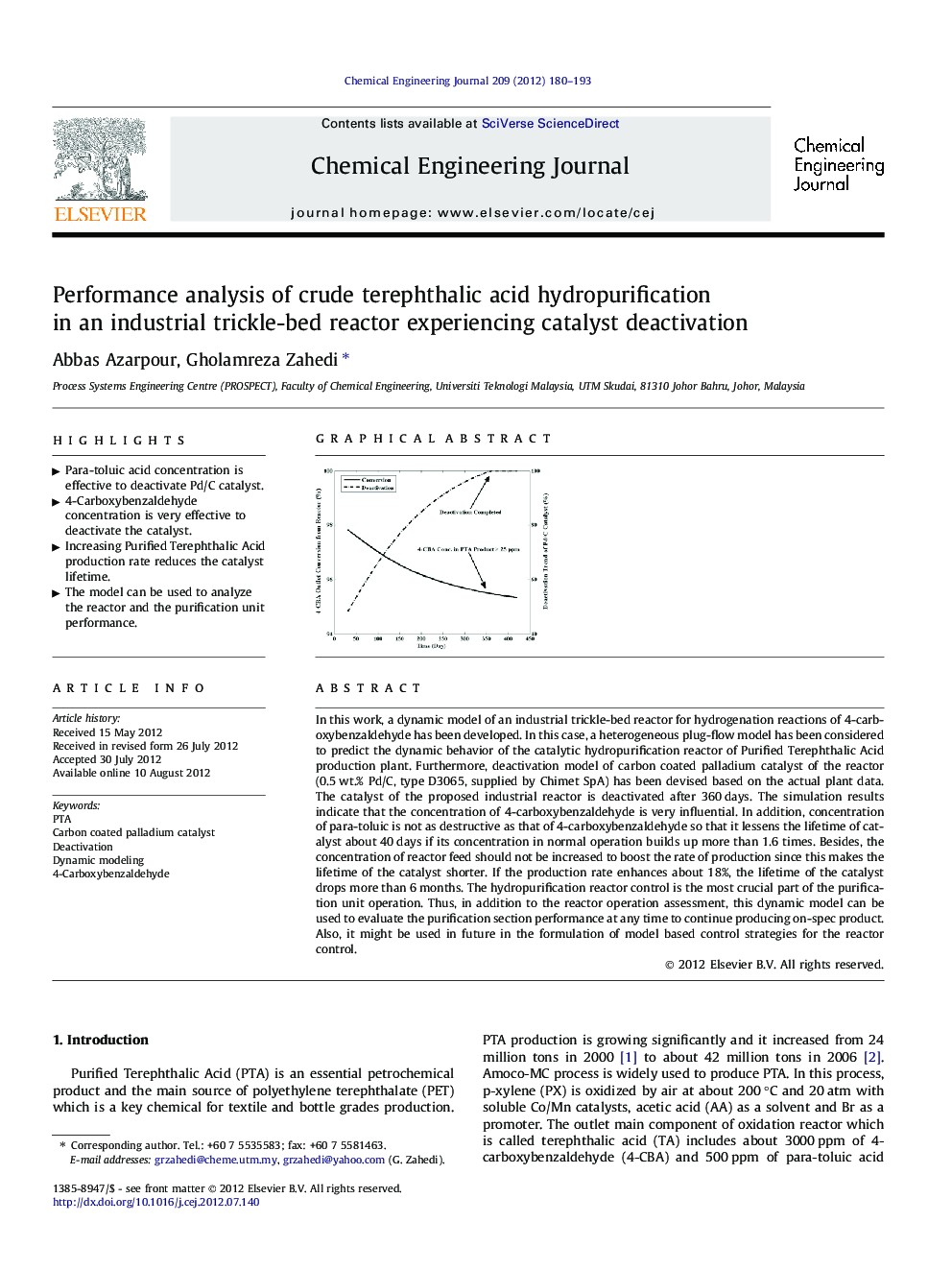| Article ID | Journal | Published Year | Pages | File Type |
|---|---|---|---|---|
| 149238 | Chemical Engineering Journal | 2012 | 14 Pages |
In this work, a dynamic model of an industrial trickle-bed reactor for hydrogenation reactions of 4-carboxybenzaldehyde has been developed. In this case, a heterogeneous plug-flow model has been considered to predict the dynamic behavior of the catalytic hydropurification reactor of Purified Terephthalic Acid production plant. Furthermore, deactivation model of carbon coated palladium catalyst of the reactor (0.5 wt.% Pd/C, type D3065, supplied by Chimet SpA) has been devised based on the actual plant data. The catalyst of the proposed industrial reactor is deactivated after 360 days. The simulation results indicate that the concentration of 4-carboxybenzaldehyde is very influential. In addition, concentration of para-toluic is not as destructive as that of 4-carboxybenzaldehyde so that it lessens the lifetime of catalyst about 40 days if its concentration in normal operation builds up more than 1.6 times. Besides, the concentration of reactor feed should not be increased to boost the rate of production since this makes the lifetime of the catalyst shorter. If the production rate enhances about 18%, the lifetime of the catalyst drops more than 6 months. The hydropurification reactor control is the most crucial part of the purification unit operation. Thus, in addition to the reactor operation assessment, this dynamic model can be used to evaluate the purification section performance at any time to continue producing on-spec product. Also, it might be used in future in the formulation of model based control strategies for the reactor control.
Graphical abstractFigure optionsDownload full-size imageDownload as PowerPoint slideHighlights► Para-toluic acid concentration is effective to deactivate Pd/C catalyst. ► 4-Carboxybenzaldehyde concentration is very effective to deactivate the catalyst. ► Increasing Purified Terephthalic Acid production rate reduces the catalyst lifetime. ► The model can be used to analyze the reactor and the purification unit performance.
